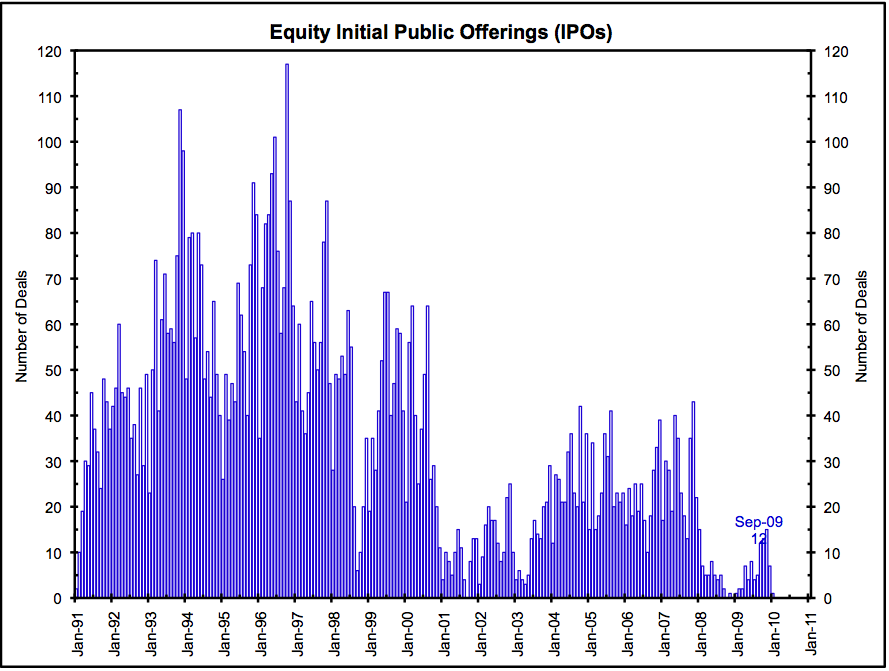I have to call foul on a surprisingly foolish article in today’s NYT. Less than a month into 2010, it is already a leading candidate for the dumbest article of the year. It reads like it was written by the PR firm for a group of VCs and Palo Alto law firms.
There were numerous ignorant comments in the article, but this is the one that actually made me laugh out loud:
“Newer restrictions, like those on executive compensation, have made I.P.O.’s even less attractive to some entrepreneurs, said Doug Collom, a partner at Wilson Sonsini Goodrich & Rosati, a Silicon Valley law firm. “Lawyers now have a profound significance in the boardroom,” he said.”
WTF is this idiot talking about? Last I checked, none of the Silicon Valley tech firms had received TARP money during the bailouts. The exec comp restrictions this dimwitted Wilson Sonsini lawyer mentioned came with the nearly trillion dollar taxpayer bailout/subsidy for insolvent banks and the incompetent execs who ran them into the ground — not dot com start ups.
What a tool.
I cannot figure out who is more responsible for this brain dead exercise in ignorance and spin — the writer who (re)typed it from a press release, or the editor who let this nonsense slide by.
Here’s some more stupidity:
“In the last two years, only 18 tech start-ups have gone public, compared with 143 in the two years prior. The Sarbanes-Oxley Act of 2002, which tightened corporate governance and accounting rules, has taken a lot of the blame.”
Astonishingly, the article fails to note the massive decrease in IPOs across all sectors due to the recent turmoil. Even more amazingly, the author somehow fails to deploy so much as one single word regarding the total collapse in the markets, or the simple fact that investors have seen precisely zero gains over the past 11 years.
Quite bluntly, I am embarrassed that this is what passes for Journalism today.
>
UPDATE: January 18, 2010 3:02pm
Here is a chart of IPOs going back about 3 decades. Note after the 1987 and 2000 and 2008 crashes, the IPO numbers plummeted. I do not know what the actual impact of Sarbanes Oxeley was on IPOs, but the data shows that after SARBOX passed, the number of new IPOs actually went up.
I am NOT suggesting there is a correlation between SARBOX and any subsequent increase in IPOs; I am merely pointing out that blatherings of those mentioned above is factually incorrect, and belied by actual data.
Have a look at these two charts, courtesy of Jim Bianco. They show the number, and the dollar amount raised in IPOs; There appears to be no correlation with SARBOX, but a huge correlation with market crashes.
>
IPOs by Deal Volume 1991-2010
IPOs by Dollars (billions) 1991-2010
>
More charts after the jump.
>
Source:
For Many Start-Ups, a Spot on the Nasdaq Is No Longer the Goal
CLAIRE CAIN MILLER
NYT, January 17, 2010
http://www.nytimes.com/2010/01/18/technology/start-ups/18venture.html
Excel Spreadsheet for IPOs anbd secondaries, Bianco Research
Equity IPO And Secondary
Some Factoids about the 2009 IPO Market
Jay R. Ritter, Cordell Professor of Finance
University of Florida, Jan. 14, 2010
http://bear.cba.ufl.edu/ritter
Chart courtesy of Prof Jay R. Ritter, University of Florida, Some Factoids about the 2009 IPO Market





What's been said:
Discussions found on the web: